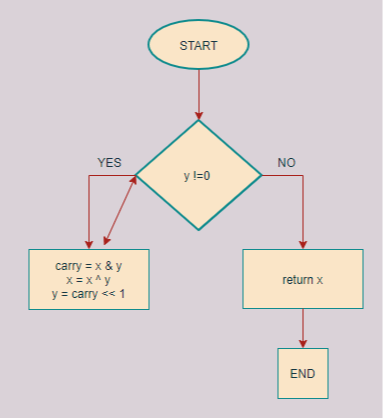How to add two integers without the addition operator in Python
Typically, the addition operator (+) is used to add two numbers, but to improve the time complexity of the operation, bitwise operators are a suitable alternative.
Description
The sum of two numbers can be obtained by performing the XOR (^) operation on these numbers and adding a carry bit that is obtained by performing the AND (&) operation.
For example, if x and y are the numbers to be added, you can calculate (x & y) << 1 and add the result to x ^ y to get the desired sum. This concept is known as the half adder.
The flowchart below demonstrates the same example.
Code
The code to find the sum of two numbers without the addition operator in Python is shown below.
def Add(x, y):while (y != 0):carry = x & yx = x ^ yy = carry << 1return xprint(Add(27,5))
Explanation
The code above performs the following actions:
-
In line 2, a
whileloop iterates until there is no carry bit left. -
In line 3, the carry bit is obtained through the bitwise
AND (&)of the given numbers. -
Line 4 calculates the sum through the bitwise
XOR (^)of the two numbers. -
In line 5, the code shifts the
carryvariable by one so that adding it toxgives the required sum.
